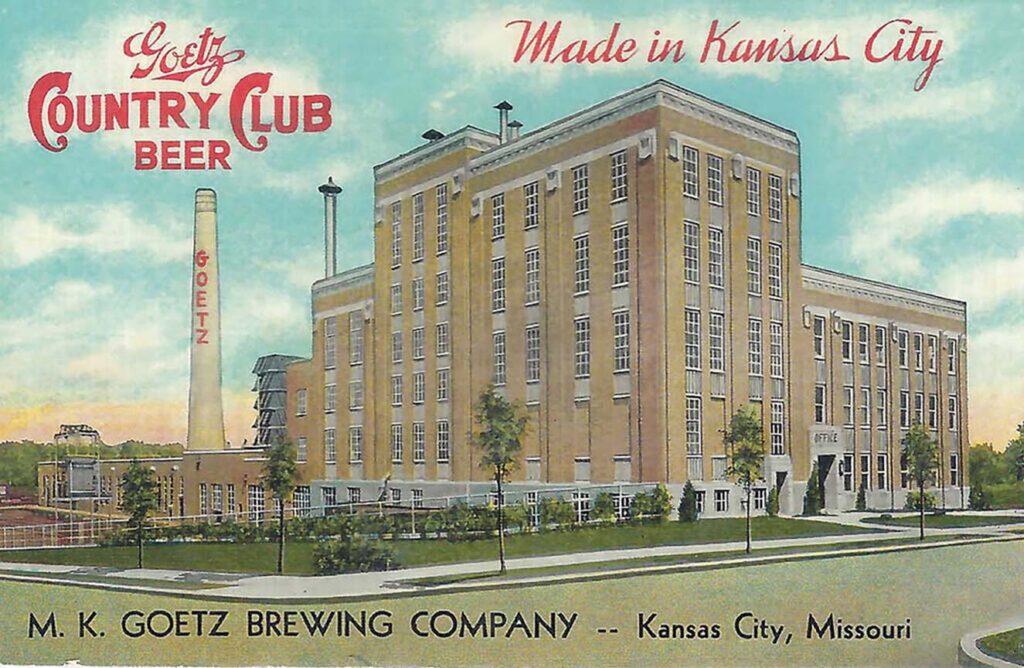
Michael Bushnell
Publisher
The new $750,000 M.K. Goetz Brewery wasn’t built in Kansas City until 1936, but it’s long, storied history had already been a major part of the St. Joseph, Mo., landscape for almost 75 years prior when in 1859, M.K. Goetz and J.J. Max started brewing beer in a shack along Blacksnake Creek.
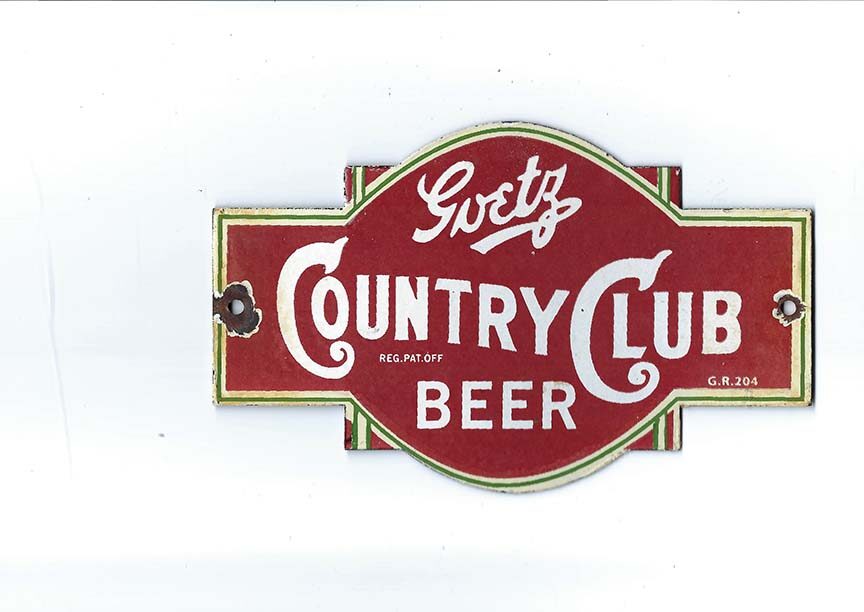
Michael Karl Goetz emigrated to the United States from Ingenheim, Alsace, Germany in 1854 arriving in Buffalo, New York. Four years later, like thousands of other Americans, Goetz, heeding the advice of the great Horace Greeley, headed west with the California gold fields as his destination but never made it past St. Joseph, MO where he found work in Henry Nunning’s brewery.
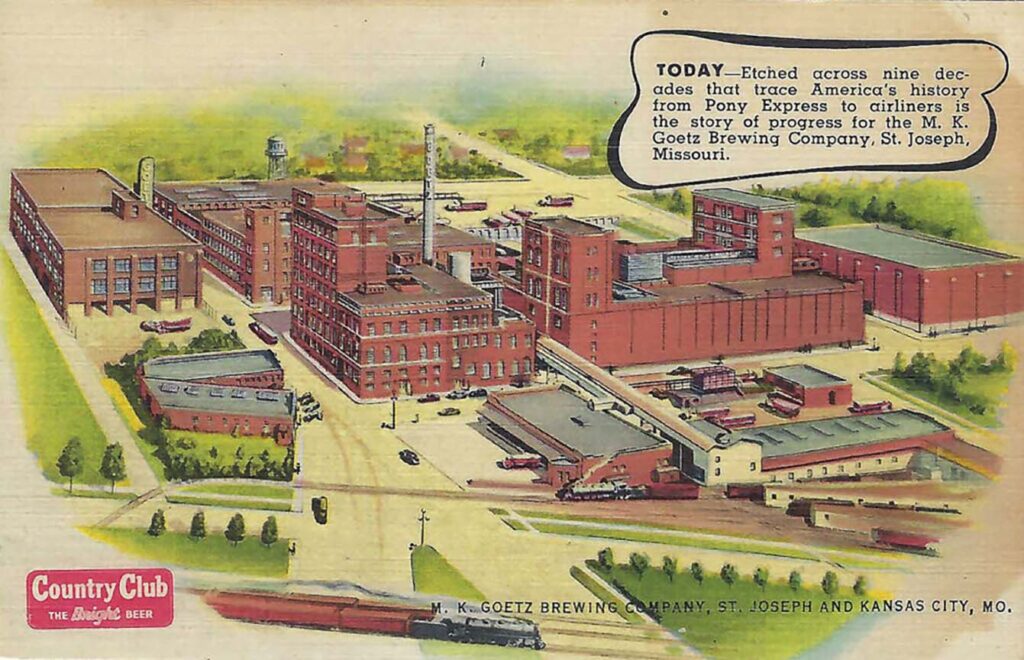
Later that year, with partner J.J. Max, he founded M.K. Goetz and Company. Operating as City Brewery, they produced St. Joseph’s first Lager style beer. By the mid-1860s, Goetz was producing almost 4,300 barrels of beer a year, rivaling the brewery of Henry Nunning & Sons for the top producing spot.
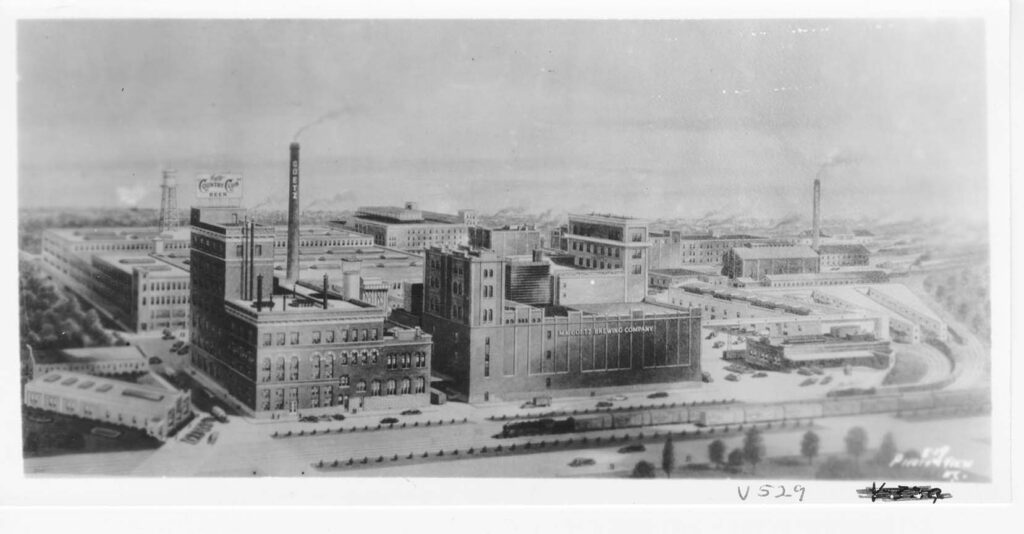
Midwesterners, then as now, enjoy a good beer and the Goetz Brewery grew exponentially. By the early 1900s, the operation spanned several city blocks and was producing over 30,000 barrels of beer annually.
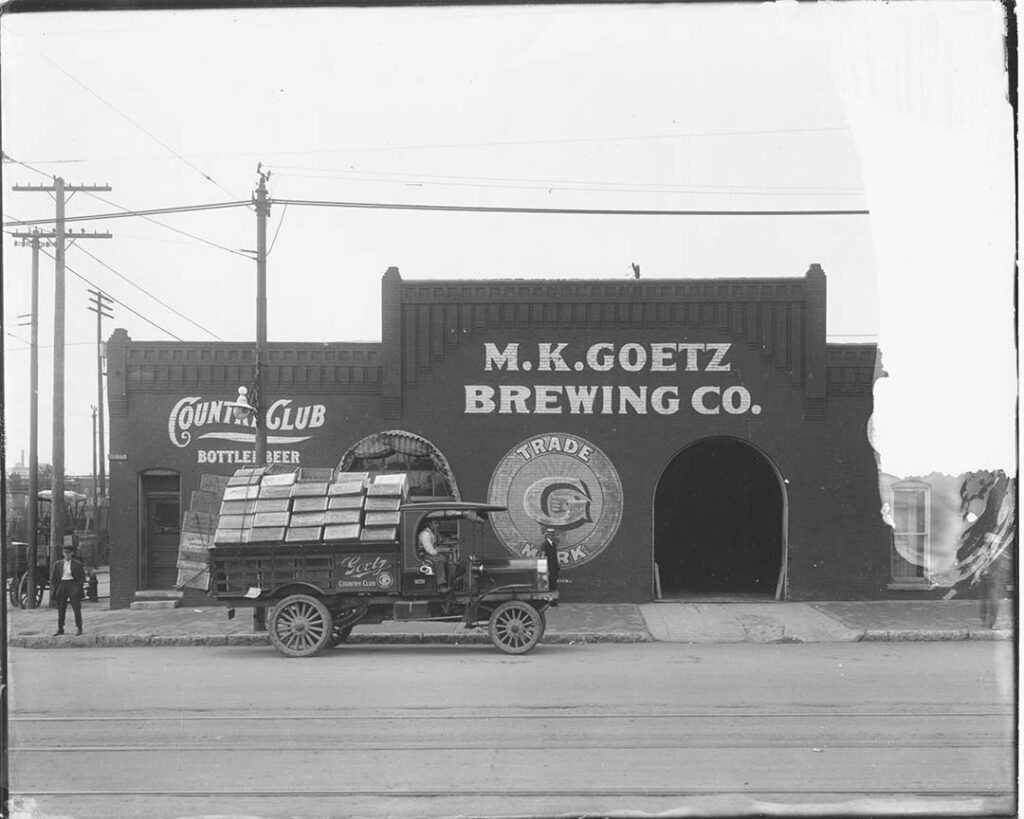
The Volstead Act, or Prohibition, passed in October of 1919 and effective in January of 1920, spelled doom for a number of smaller brewers across the country but Goetz continued to operate by selling Goetz Country Club Special, a near beer with very low-alcohol content that tasted like the real thing. That choice of product was a fortunate decision for Goetz because it was an easy transition back to brewing real beer when Prohibition ended.
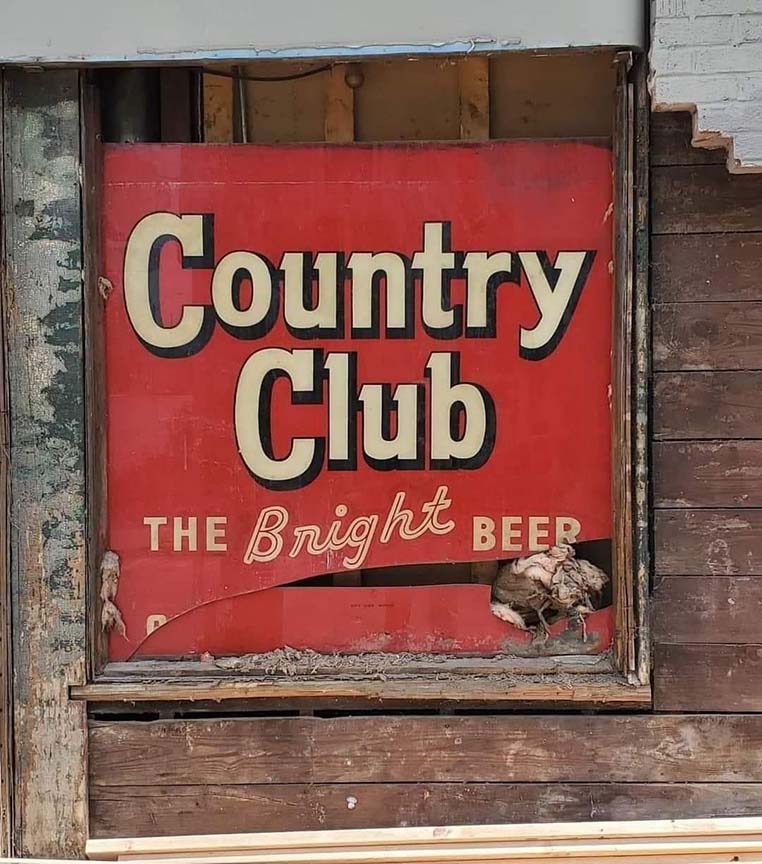
Historic Preservationists worked with building owners and contractors to secure the sign and safely move it to a secure location. It is now part of a private collection. The sign dates to pre-1956 when Goetz phased out the words “Country Club” in most of their brands with the exception of their Malt Liquor line.
Following Prohibition’s repeal in 1934, Goetz made the decision to expand into the Kansas City market with a new brewery facility. The site selected for it was the old circus grounds on the northeast corner of 17th and Indiana. On May 25, 1936, the Kansas City brewery opened with a capacity to employ upwards of 250 people and produce more than 100,000 barrels a year. The opening day gala event was attended by over 1,000 people and a variety of local dignitaries including City Manager Roy Fulton, Mayor Bryce Smith, Judge Henry McELroy and Chamber of Commerce President Fred Goldman. All were given a tour of the new grand facility along with a sit-down luncheon with free samples. The opening was even broadcast live by KMBC Radio.
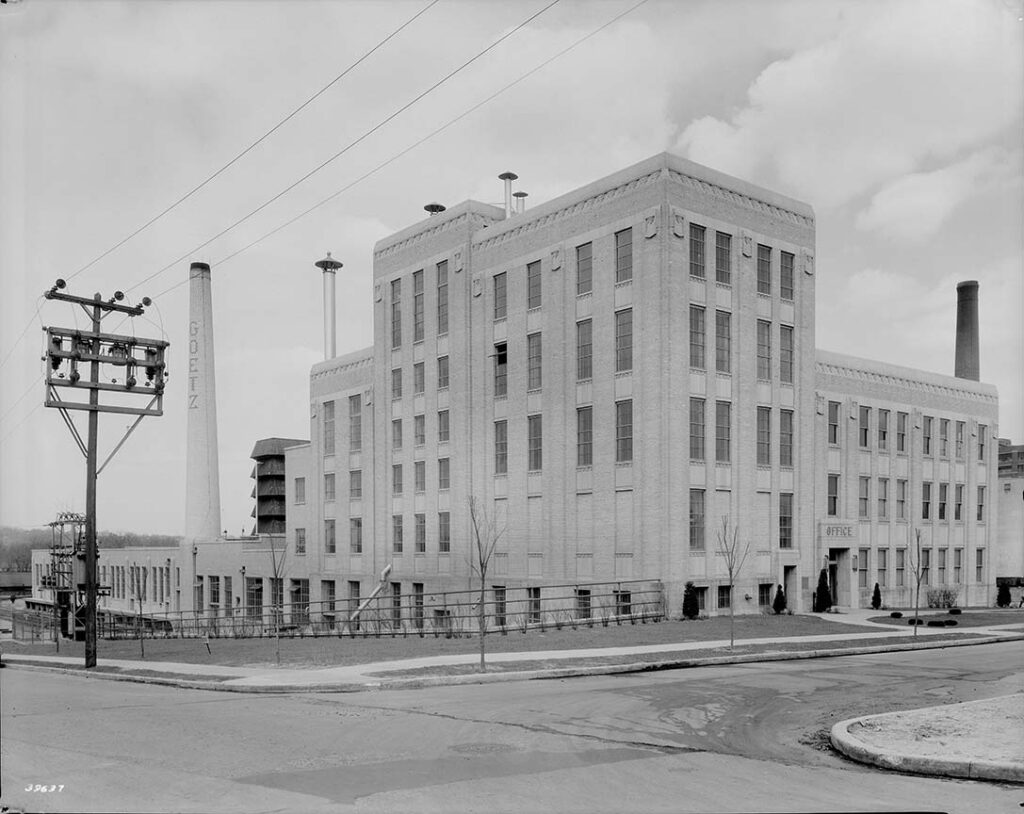
On Friday, July 7th, 1939, The Kansas City Goetz Brewery fell victim to one of the most smoothly executed hold-ups in Kansas City history. Two masked men entered the brewery office on 17th street while two others entered the office from a side door. Employees, fourteen in total, were herded into the middle of the office at gunpoint.
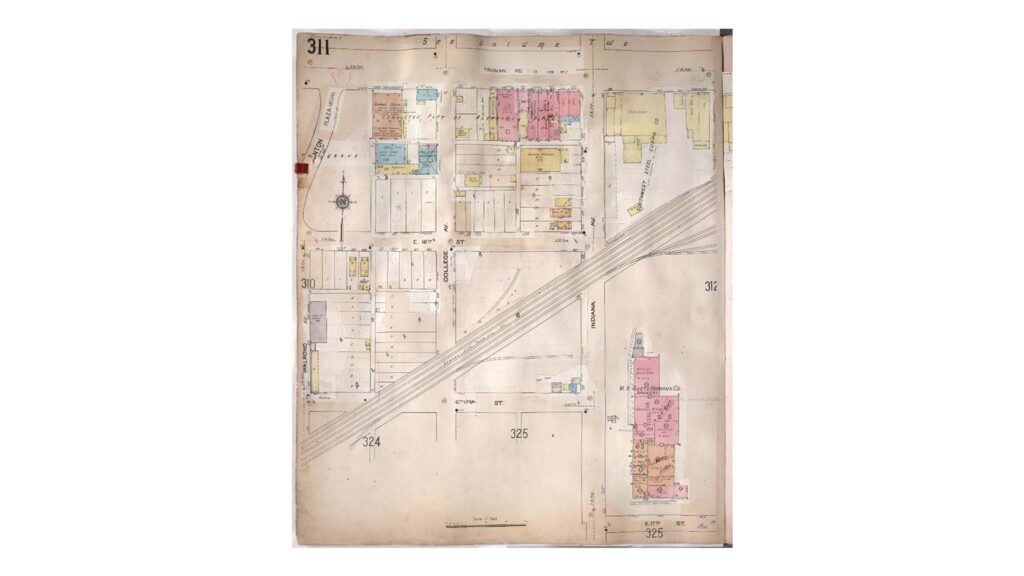
Commerce Bank & Trust had just delivered $5,000 in cash twenty minutes prior to the robbery in order to meet Saturday’s payroll. Quickly nabbing the cash, employees were then ordered into the vault. The only witness according to published accounts was Frank Nigro who saw five men in a blue sedan speed out of the parking lot. Police Department detectives were baffled but believed it to be an inside job given the robbers seemed to know when payroll was delivered.
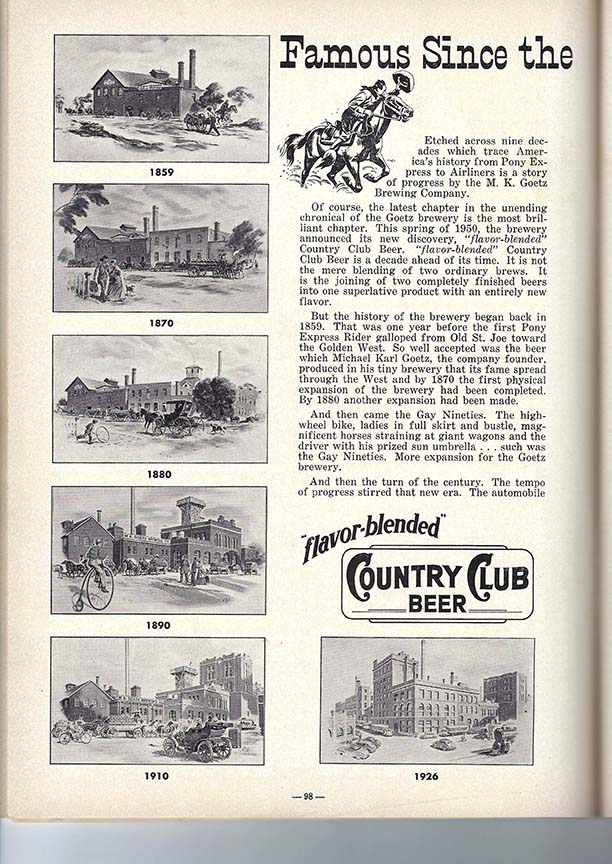
By 1947, production between the St. Joseph and Kansas City breweries was topping 650,000 barrels a year. But change was coming. The role of the Goetz brothers in the brewery operation began to diminish. In 1960, citing a changing market, the Goetz brewery merged with Pearl Brewing and consolidated all operations into the St. Joseph plant. The Kansas City site was sold to local developer Jack Genova for $160,000. Genova then spent another $40,000 transforming the brewery into warehouse space.
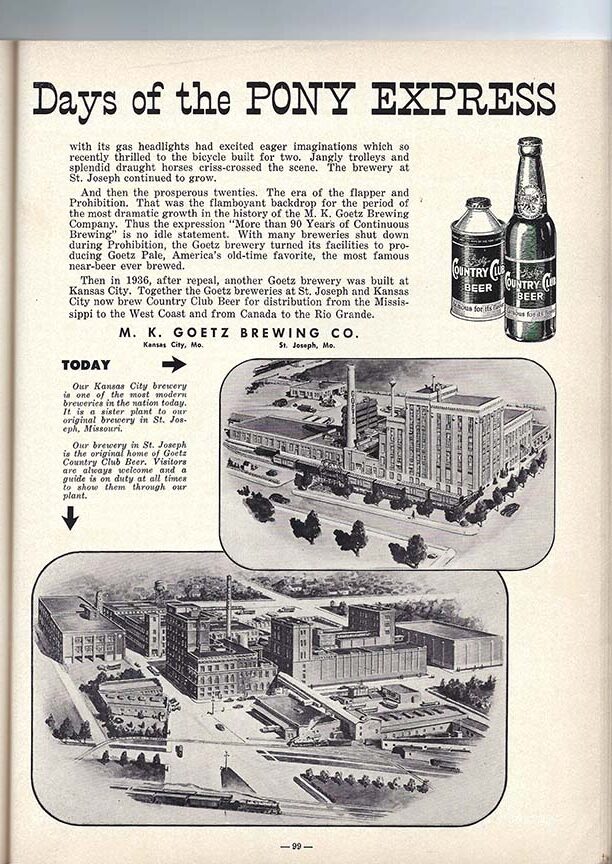
In 1977, the site was acquired by Sears and was leveled to make way for an expanded warehouse for their 15th and Cleveland store. The signature, buff-brick smokestack with the Goetz name emblazoned down its side was no more. A year prior, operations at the Pearl Brewery in t. Joseph ceased and the company consolidated everything into its San Antonio, Texas, location.
The description on the back of this linen postcard published by the Allis Press of Kansas City notes: “View of the M.K. Goetz Brewing Company. Completed in 1936 on the historic circus grounds at 17th & Indiana. America’s most modern brewery. New from the ground up.”
The Northeast News would like to thank the Kansas City Public Library, Missouri Valley Special Collections for their assistance with this series.
Additional information was gleaned from the book Hometown Beer: A history of Kansas City’s Breweries by H. James Maxwell and Bob Sullivan Jr. Copyright 1999, Omega Innovative Marketing, Kansas City, MO.


















